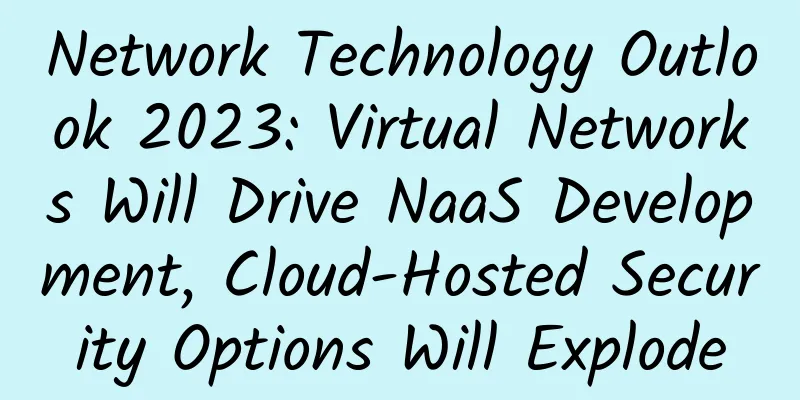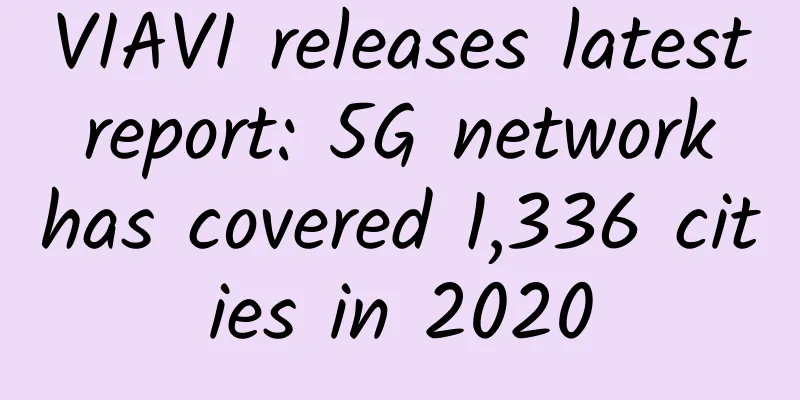Network Technology Outlook 2023: Virtual Networks Will Drive NaaS Development, Cloud-Hosted Security Options Will Explode

|
What are the most important things that enterprises should know about networking in 2023? First, enterprises need to forget everything they hear about networking from vendors. The most accurate answer is that the network is and will be associated with applications and business, and these applications are now the main way to link to the Internet and the cloud in enterprises, so enterprises are changing the way they distribute and deliver business value through the network, and network technology will inevitably change. 1. Increasing dependence on the InternetFirst, the Internet will get better because it will become more important. Every day, people do more things online and get more interactive, dynamic, and interesting sites to visit and consume content, so the usability of the Internet has been quietly increasing. From this, we can see that enterprises will continue to increase their dependence on the Internet. The Internet serves as a channel for sales and customer support, and increasingly as a way for employees to access core applications. During COVID, most companies began to use the Internet to support working from home. Through remote work, enterprise IT managers found that if they supported employees' work through the Internet, they could bring traffic directly into the data center and bypass VPN. As a result, the Internet began to erode the growth of VPN traffic, which will continue and accelerate in 2023. 2. Solve the pressure of Internet delayThe growth of Internet reliance has certainly driven the development of cloud computing, as high-quality, interactive user interfaces have become critical. Cloud technology is much better at this, and it is easier than changing data center applications. However, many cloud interactivities increase latency and further validate the need to improve Internet latency. Interactivity and latency sensitivity often cause two effects. First, when interactive components are moved to the cloud via the Internet, enterprises will create a new network in the cloud that runs parallel to the traditional MPLS VPN. Second, cloud hosting is encouraged to move closer to the edge to reduce application latency, which in turn reduces network latency. 3. Virtual networks are everywhereAll the applications around the Internet and the cloud make any fixed network strategy more difficult. In fact, 2023 will be the year many users start to choose "virtual networks become networks". In the cloud, branch offices and data centers, connections will move from "physical networks" to virtual networks. The company's "network" will become an overlay of multiple, diverse physical networks. Applications will connect to virtual networks, and virtual networks will provide us with security and will try to ensure information access and content delivery. Of course, it will not immediately replace MPLS VPN, but it does require the connection management to be elevated above MPLS VPN; think of virtual network on MPLS. Since the network connection is the network service seen by the user, this pulls away the differentiation of the physical transmission elements of the network, which is also a key step in transforming virtual network technology into a network as a service (NaaS) framework. In fact, NaaS is a technology that will not land in the user's yard and require their own inspection, leaving users free to assign it any functions they like without worrying about impact. In 2023, NaaS will gradually become solid, and many NaaS models will appear, some of which will not change much from the current functions, while others will decisively merge network and cloud concepts. Therefore, it is expected to enter somewhere in the continuum of models before the end of this year, and where we land will determine the effect of the network on improving work and life after 2023. 4. Cloud hosting security reigns supremeWhat about security? The combination of the Internet and the cloud has also changed this. Users can no longer rely on fixed security devices in the cloud, so more and more applications will use cloud-hosted security tool instances. Today, only about 7% of security is handled in a cloud-hosted manner, but by the end of 2023, that percentage will triple as SASE, SSE, and other cloud-hosted security elements explode. We can already see a shift in security focus toward the cloud, as well as a broader use of virtual networks that can connect agile cloud elements to an increasingly mobile workforce. Even SD-WAN, which was introduced as a way to use broadband internet to replace MPLS to create VPNs, is now at least often used as a means of connecting cloud applications to and from each other. 5. Existing suppliers have advantagesOn the vendor side, businesses are looking for alternative cyber strategies, but they still see the giants they can trust, preferably those they already use. Due to economic uncertainty, businesses in 2023 are less risk-tolerant and therefore more reluctant to increase risk. In 2022, only 9% of enterprises said their network vendor’s primary competitor is the enterprise that is “innovating” for the future, which is down from 15% in 2021 and a high of 22% in 2019. Given that we have more innovative network technologies available today than ever before, this number seems to indicate that vendors are not truly driving a vision for the future that is worth technological advancement. Original article address: https://www.networkworld.com/article/3684176/looking-ahead-to-the-network-technologies-of-2023.html Original author: Tom Nolle |
<<: What is CDN? Is using CDN definitely faster than not using it?
>>: The most anticipated technology trends in 2023
Recommend
GSA report: There are 169 5G commercial networks in the world, covering all continents
[[408032]] According to the latest report from GS...
Wi-Fi 7: What is it and when can you expect it to arrive?
[[380191]] Wi-Fi 7 is expected to have higher dat...
How eSIM is revolutionizing wireless technology
Embedded Subscriber Identity Modules (eSIMs) have...
Predictions for IT development after COVID-19
Gartner and IDC predict that global IT spending w...
Port reuse So_Reuseaddr
Port reuse is a classic problem in network progra...
Ruijie Networks' scenario-based wireless technology helps Suning's new shopping model of "Internet + Retail"
As a leading enterprise in China's private en...
Why is the VR panoramic industry rising?
It has been some time since 5G was commercialized...
Huawei China ICT Ecosystem Tour 2018 Series of Activities Invite You to Win the "Ecological Era" Together
[51CTO.com original article] In March this year, ...
How to design network architecture to make IoT devices safe and reliable?
[51CTO.com Quick Translation] While the Internet ...
Ministry of Industry and Information Technology: The total number of 5G base stations in my country has reached 819,000
Recently, the Ministry of Industry and Informatio...
EtherNetservers: $25/year-4GB/250GB/5TB/2IP/Los Angeles & New Jersey data centers
EtherNetservers is a foreign hosting company esta...
Eurocloud's new San Jose high-defense VPS starts at 8 yuan per month, and Hong Kong CN2 starts at 15 yuan per month
The tribe shared information about Olu Cloud once...
Do you really understand hybrid cloud? Dive into the cloud and look at some confusing cloud computing concepts
[51CTO.com original article] Cloud computing is g...
Why is network proxy technology so popular? Forward proxy | Reverse proxy
1. The concept of agency I believe everyone has h...
The 5G standard is here, when will the licenses and mobile phones arrive?
Just a few days ago, the plenary session of the i...









